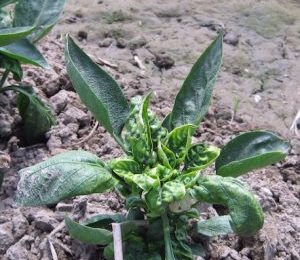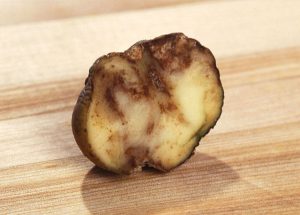Exam Question from R2103 – Maintaining Plant Health – February 2011
Q.1. a) Describe ONE named example of biological control for one NAMED plant pest. (2)
b) State TWO benefits and TWO limitations of chemical and biological control methods by completing the table below. (8)
(Shown as a list here for clarity)
Chemical Control
Benefits 1.
2.
Limitations 1.
2.
Biological Control
Benefits 1.
2.
Limitations 1.
2.
Sample Answer
Q.1. a) Describe ONE named example of biological control for one NAMED plant pest. (2)
‘Nemaslug’ is a biological control treatment specific to slugs, with no adverse effect on other types of animal. Nemaslug is a microscopic nematode that is watered into the soil. The nematodes (Phasmarhabditis hermaphrodita) enter the slug’s body and infects it with bacteria that cause a fatal disease.
A moist soil and soil temperatures of 5-20ºC (41-68ºF) are required, therefore control is most effective during spring to early autumn. Best results are achieved by applying in the evening to moist but well-drained soils; control may be less successful in heavy soils, such as clay.
The examiners’ note that the most popular answer to this question was Encarsia Formosa, the parasitoid wasp used to control Glasshouse Whitefly. They also note “ Descriptions of the biology, how it is introduced, attacks and destroys the young immobile stages of the whitefly were rewarded.
b) State TWO benefits and TWO limitations of chemical and biological control methods by completing the table below. (8)#
Chemical Control
Benefits
1. Rapid control of of pests and diseases that would otherwise spoil the appearance or cause the death of plants.
2. Can improve the quality and yield of flowers, fruits and vegetables
Limitations
1. Almost all pesticides have a broad spectrum of activity and will kill beneficial insects along with pests. This may allow pests to return
in greater numbers due to the demise of their natural enemies.
2.Regular use of pesticides can lead to the development of resistance, so the pests become more difficult to control on future.
Biological Control
Benefits
1. Targeted towards a specific pest and do not damage other species.
2. In any cases, once a population of control organisms is established it will provide longer-term control than other control mechanisms.
Limitations
1. Natural enemies of garden pests often breed too slowly to prevent damage.
2.Some pests have no effective natural enemies so biological controls cannot be identified.
The examiners’ note “…better candidates avoided giving opposite examples in parallel columns and those candidates who provided eight different answers showed a very good understanding of the topic. Answers that gave some clarification were also rewarded; e.g. Chemical Control – east to use by amateurs when bought as a ready mixed hand held spray. Statements such as storage and shelf-life, targeting of specific pests were all acceptable.


